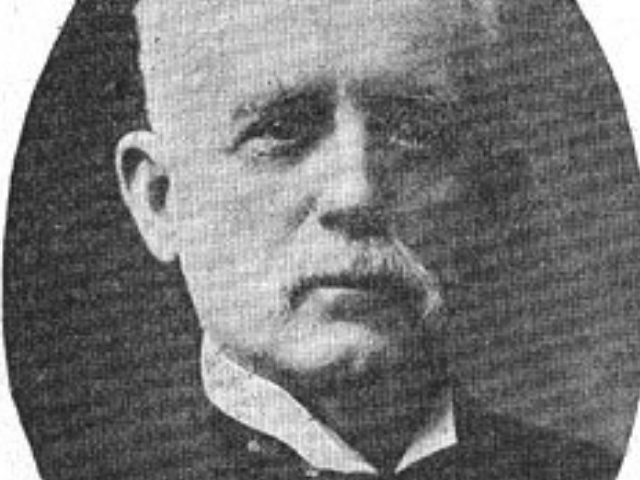
Hugh Smith Thompson (1836-1904), Governor of South Carolina c. 1886. Wikimedia Commons.
(1826-1904) Thompson was born in Charleston, the son of Henry Tazewell Thompson and Agnes Smith. Thompson entered the Citadel in 1852, graduating in 1856. On January 1, 1858, he was elected second lieutenant and assistant professor of mathematics and French at the Arsenal Academy in Columbia. In October 1861 he was transferred to the Citadel as captain-professor of French and belles lettres. Thompson married Elizabeth Anderson Clarkson on April 6, 1858. The couple had nine children.
During the Civil War, Thompson continued to teach and served as captain of a battalion of state cadets, which saw service defending Charleston harbor and other areas of the state. Returning to Columbia after the war, Thompson served as served as principal of the Columbia Male Academy from 1865 until 1880
First elected state superintendent of education in 1876, and reelected in 1878 and 1880, Thompson laid the foundations for the development of the state’s public school system. As superintendent, he helped win passage of the school law that centralized management of the school system in a state board of commissioners. He worked to equalize expenditures for white and black schools, established summer teachers’ institutes, and was responsible for the creation of the State Teachers’ Association. His greatest achievement was in winning support for public education in general and for blacks in particular against a tradition of public hostility, apathy, and prejudice.
Thompson agreed to accept the presidency of South Carolina College in 1882 but reversed his decision when he was nominated by a deadlocked Democratic convention as a compromise candidate for governor. Thompson continued his advocacy of educational improvement, supported civil service and tax reform, and called for rigid economy in government. Reelected without opposition in 1884, he was appointed assistant secretary of the U.S. Treasury and resigned the governorship. In 1889, President Benjamin Harrison nominated him as a member of the U.S. Civil service Commission. He resigned in April 1892 to become comptroller of the New York Life Insurance Company, a position he held until his death.


